15 Compost Materials to Add This October for a Rich Spring Mix
Composting in October is one of the best ways to prepare for a rich and healthy garden in spring. The cooler weather makes it easier to gather materials like fallen leaves, vegetable scraps, and straw before winter sets in. Adding the right mix of brown and green materials now helps your compost break down naturally over the coming months. By spring, you will have dark, nutrient-rich compost ready to feed your garden beds. It is an easy and rewarding habit that reduces waste while improving soil health.
This post may contain affiliate links, which helps keep this content free. Please read our disclosure for more info.
Fallen Leaves
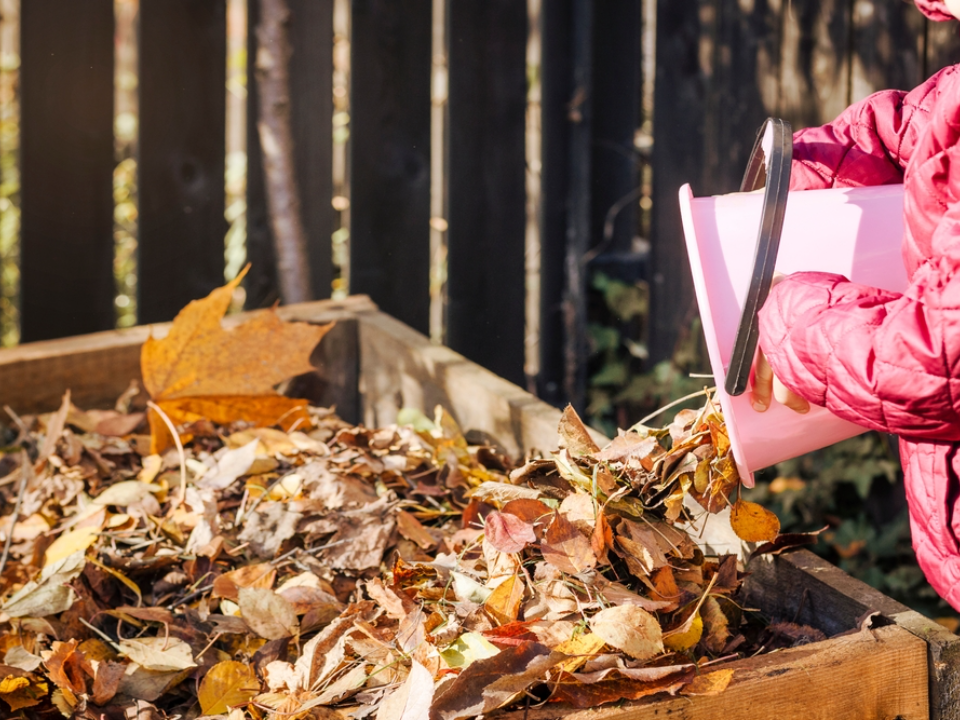
Fallen leaves are among the best materials to collect in October. They are abundant, free, and packed with carbon, which helps balance out nitrogen-rich green materials in the compost pile. Dry leaves help create air pockets that allow oxygen to circulate, preventing foul smells and promoting healthy decomposition. It is best to shred the leaves first to speed up the breakdown process during the winter months.
By spring, these decomposed leaves turn into a fine, dark material often called leaf mold. This product improves soil structure, moisture retention, and nutrient content. Adding a layer of leaf mold to your garden beds helps plants grow stronger and healthier once the weather warms up.
Pumpkin Scraps
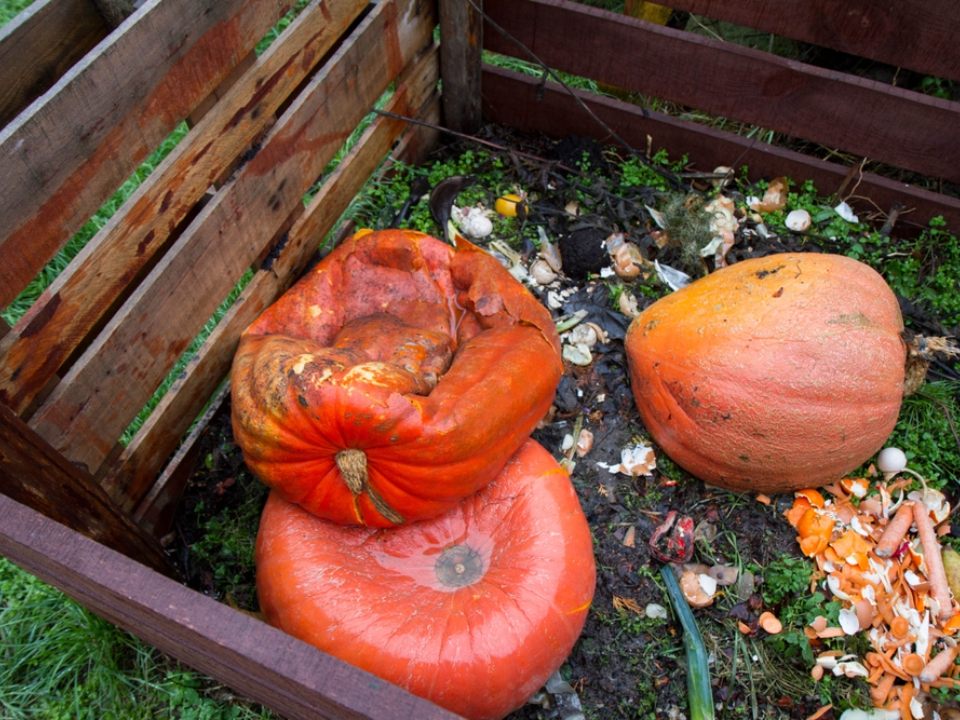
After carving or cooking pumpkins this fall, save the scraps for composting. Pumpkin flesh and rinds are soft and decompose quickly, making them a perfect nitrogen-rich addition to your bin. Even the seeds can go in, though crushing them helps them break down faster. Remove any candles, paints, or stickers before composting decorative pumpkins.
Pumpkin compost adds valuable nutrients like potassium and phosphorus to the mix, which are important for strong root growth in spring plants. When combined with brown materials such as dry leaves or straw, pumpkin pieces turn into a rich compost base that benefits both vegetable gardens and flower beds.
Coffee Grounds
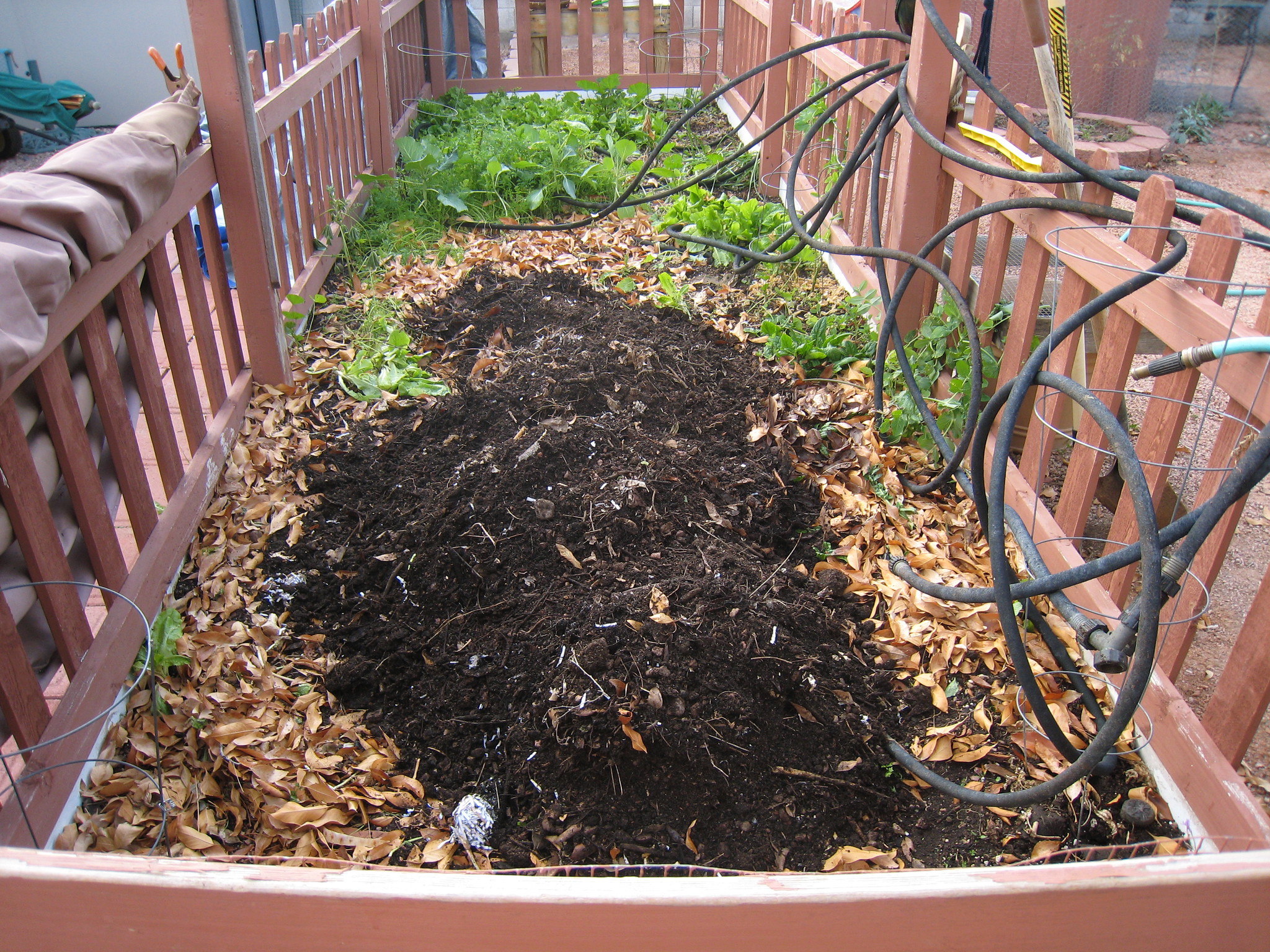
Used coffee grounds are an excellent addition to compost piles during cooler months. They add nitrogen, which helps speed up the decomposition process. Coffee grounds also attract worms, which play a key role in breaking down materials and aerating compost. If the grounds are wet, mix them with dry leaves to prevent clumping.
Once processed, coffee-based compost enriches the soil with essential minerals like magnesium and copper. Gardeners often notice improved soil texture and stronger plant growth when using it. It is best to add coffee grounds gradually to maintain a balanced mix of carbon and nitrogen materials.
Apple Peels and Cores
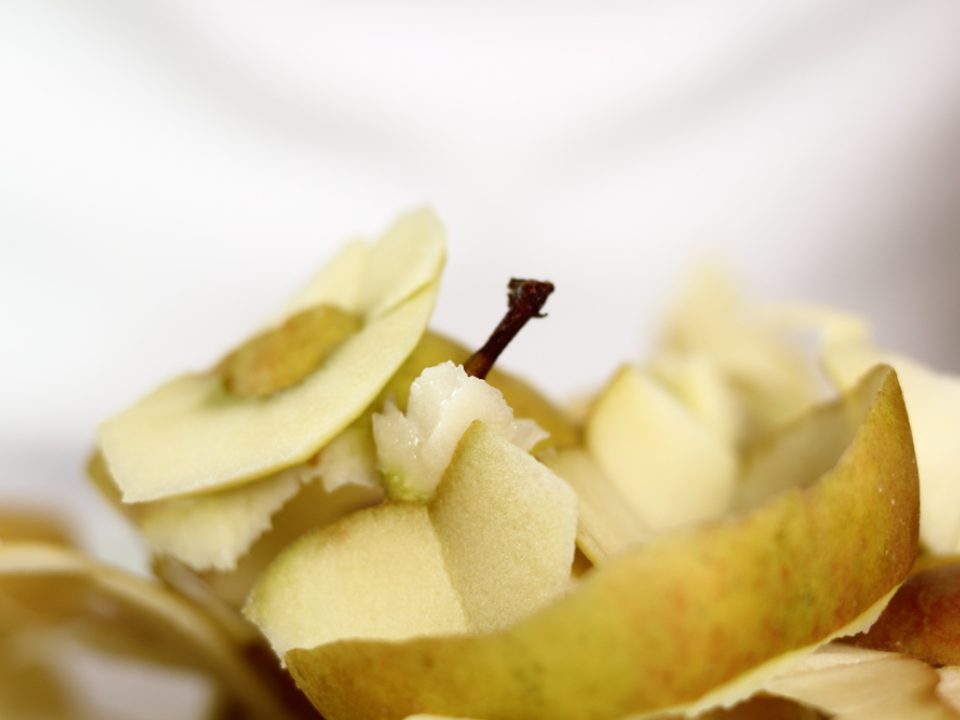
October brings apple season, which means plenty of peels and cores for composting. These scraps are high in moisture and natural sugars that attract beneficial microbes. They break down quickly and add nitrogen to your compost pile. Mixing them with dry materials like leaves or cardboard helps prevent the pile from getting too wet.
The result is nutrient-dense compost ideal for fruit trees, vegetable beds, and flowering plants. Apples also contribute trace minerals that boost soil fertility over time. Avoid adding apple pieces coated with wax or chemicals to keep the compost pure and organic.
Corn Stalks
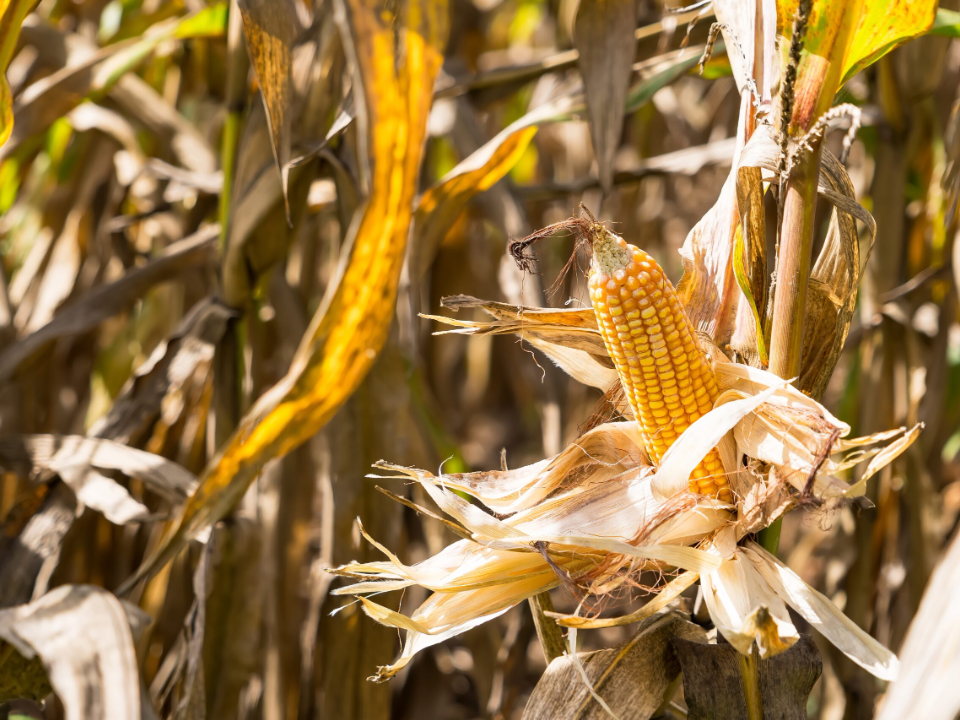
Corn stalks from the harvest season are perfect for adding bulk to compost piles. They are rich in carbon and help keep the pile aerated when chopped into smaller sections. Since they decompose slowly, shredding or breaking them apart speeds up the process and prevents clumping. Pairing them with green materials like food scraps or grass clippings balances the compost mix.
By spring, compost containing corn stalks produces a crumbly texture that enhances soil drainage. It also increases organic matter, helping roots spread easily. This is especially helpful for heavy clay soils that benefit from improved structure and air circulation.
Eggshells
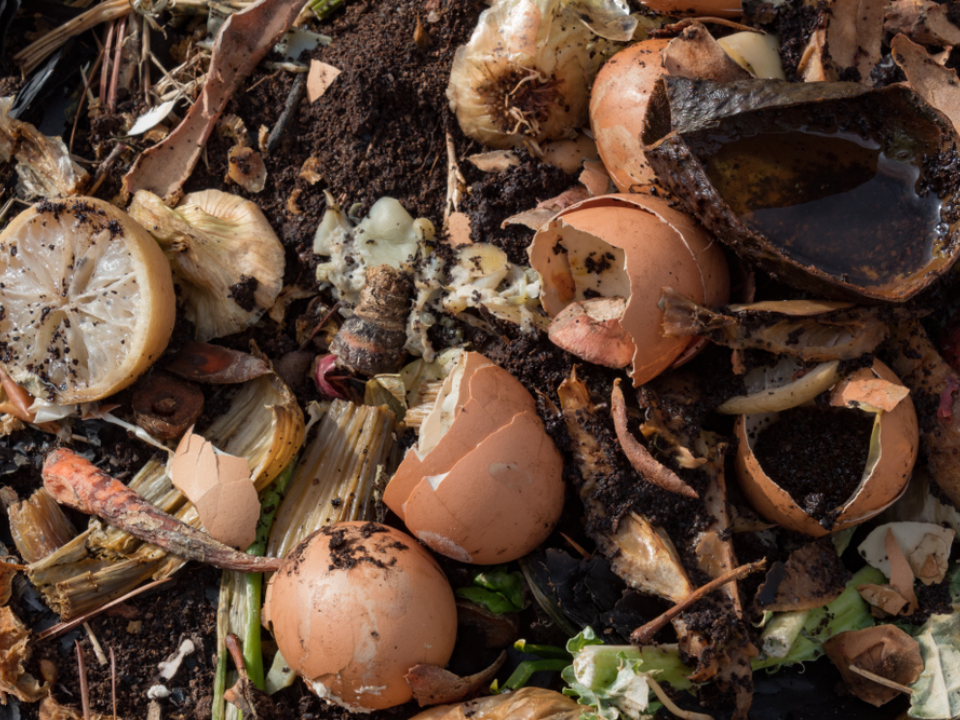
Eggshells are a useful addition to October compost because they add calcium, which supports healthy cell development in plants. Crush them before adding to the pile to help them break down more easily. Calcium-rich compost is particularly beneficial for preventing blossom-end rot in tomatoes and peppers.
Over time, eggshells release minerals that strengthen plant structure and boost soil fertility. Though they decompose slowly, their long-lasting benefits make them worth including in the mix. For faster results, grind the shells into a fine powder before adding them to your bin.
Grass Clippings
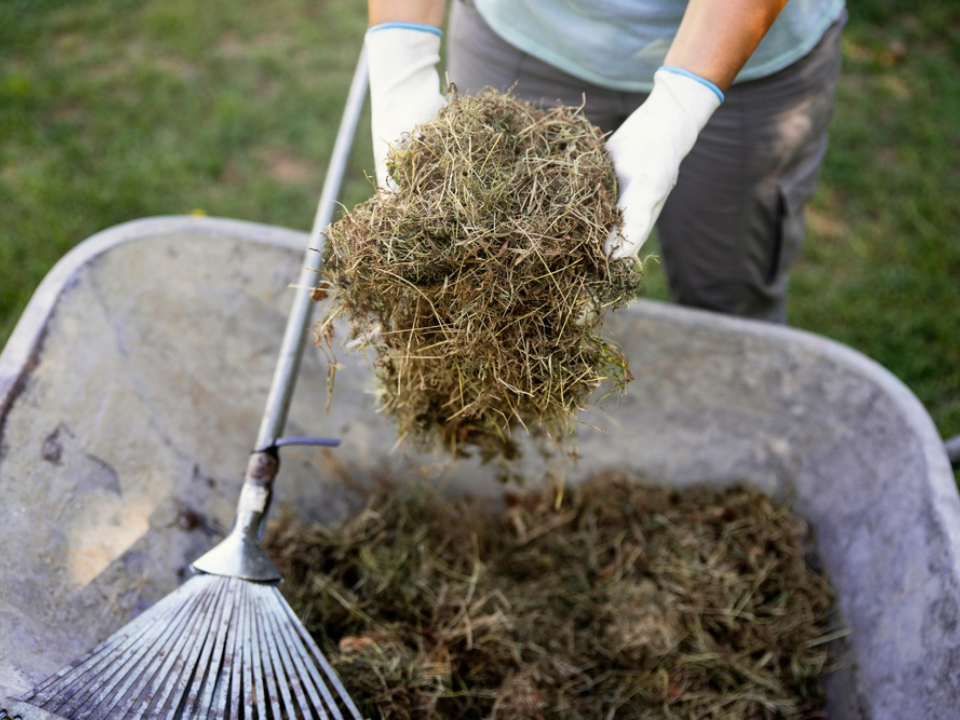
Grass clippings are rich in nitrogen and decompose quickly, providing the energy needed for microorganisms to thrive. In October, if your lawn still grows, collect the last few rounds of clippings and mix them into your compost. Be careful not to add thick layers, as they can become compacted and block airflow.
When mixed properly with brown materials, grass clippings create a balanced compost that breaks down evenly. The resulting compost helps improve soil structure and supports plant growth during spring. It is best to let clippings dry slightly before adding them to avoid excess moisture buildup.
Pine Needles
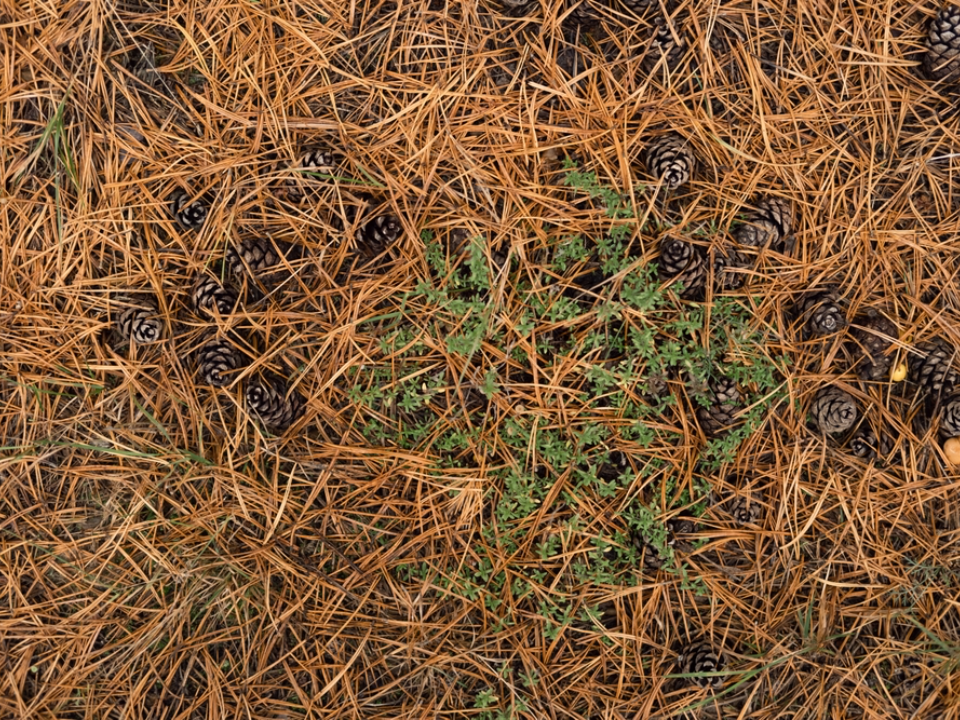
Pine needles make an excellent long-term carbon source for compost piles. They decompose slowly, creating an even, airy texture that keeps the compost pile from compacting. Their natural acidity can balance alkaline materials, resulting in a well-blended compost. Using a mix of fresh and dry needles adds both structure and richness.
Once composted, pine needles contribute to a nutrient-rich mix perfect for acid-loving plants such as blueberries and azaleas. They help improve soil drainage and texture, making them ideal for sandy or clay-heavy soils. Collect them regularly to maintain a steady carbon balance through winter.
Vegetable Peels
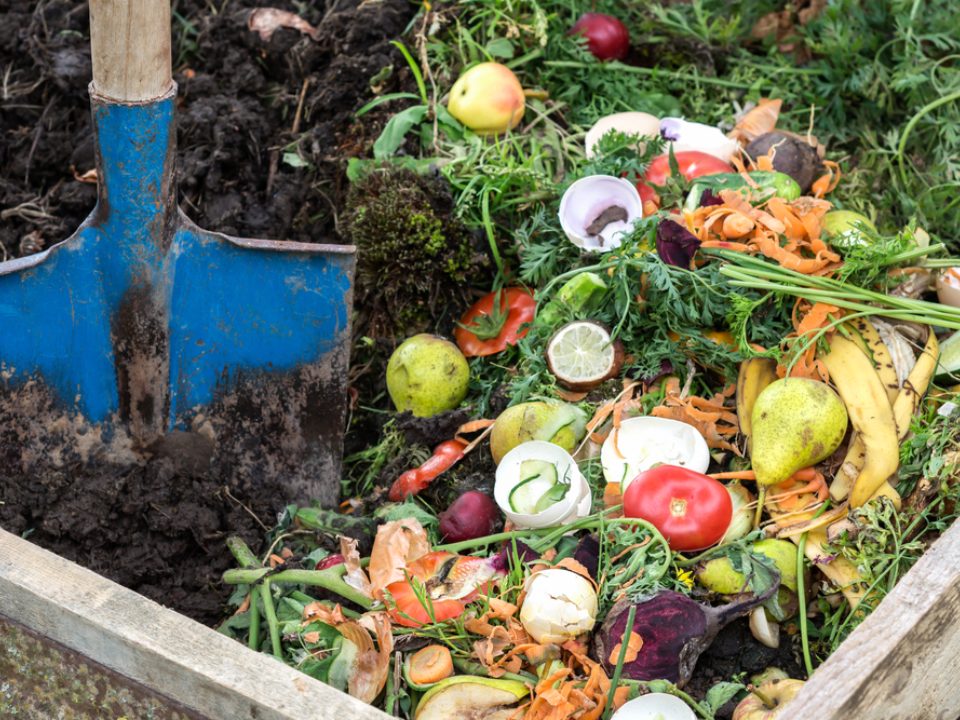
Kitchen scraps such as carrot shavings, potato skins, and onion layers are ideal for composting. They break down quickly and supply nitrogen and moisture to the compost pile. Keeping a small container in the kitchen for daily scraps makes it easy to gather these materials throughout the fall season.
When composted, vegetable peels enrich soil with trace minerals and organic matter. This type of compost improves root development and overall plant health. Avoid adding oily or salted food scraps to keep the compost healthy and odor-free.
Shredded Paper

Shredded paper acts as a carbon-rich material that absorbs moisture and balances wet food scraps. It is a good alternative to dry leaves when fewer natural browns are available in late fall. Avoid glossy or colored paper, as those can contain dyes or chemicals that harm compost microbes.
Once decomposed, paper-based compost creates a light and fluffy soil amendment. It increases aeration and improves water retention, which benefits both garden beds and container plants. Mixing it regularly helps the pile maintain the right balance between dry and moist materials.
Straw and Hay
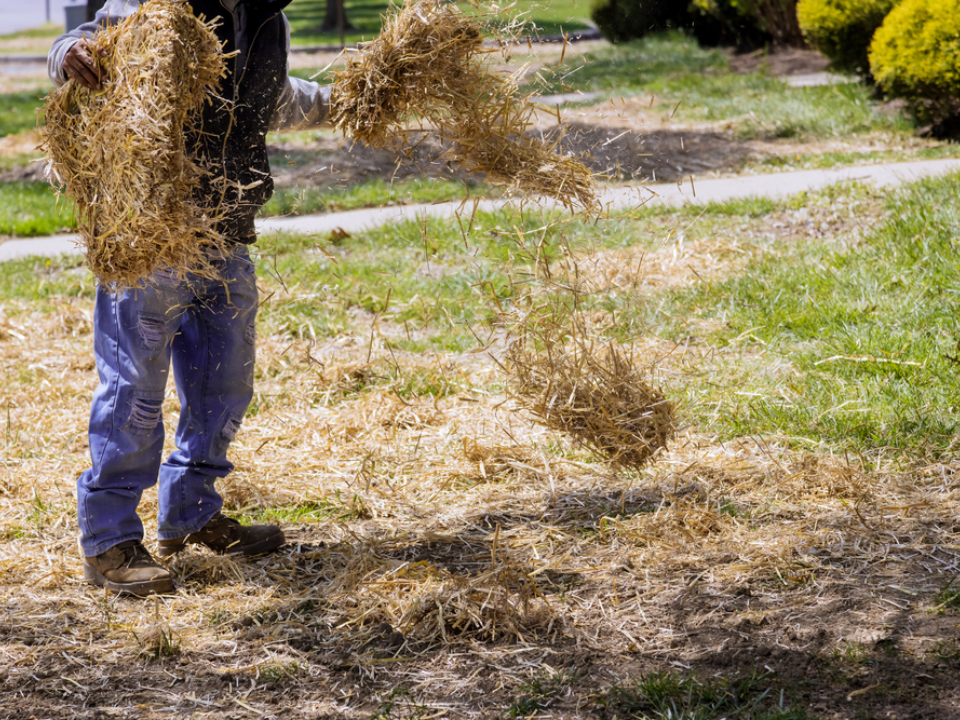
Straw and hay are excellent brown materials for composting in October. They provide carbon, help absorb extra moisture, and keep the compost pile from becoming too compact. Straw is especially helpful for maintaining airflow within the pile, preventing odor buildup during decomposition. It is best to use old or moldy hay that is no longer suitable for animal feed.
When fully broken down, straw-enriched compost becomes light and crumbly, improving garden soil structure. This mix works well for vegetable patches and flower beds, creating ideal growing conditions for the next planting season. A thin layer of straw can also be used as mulch to hold moisture once spring arrives.
Cardboard Pieces
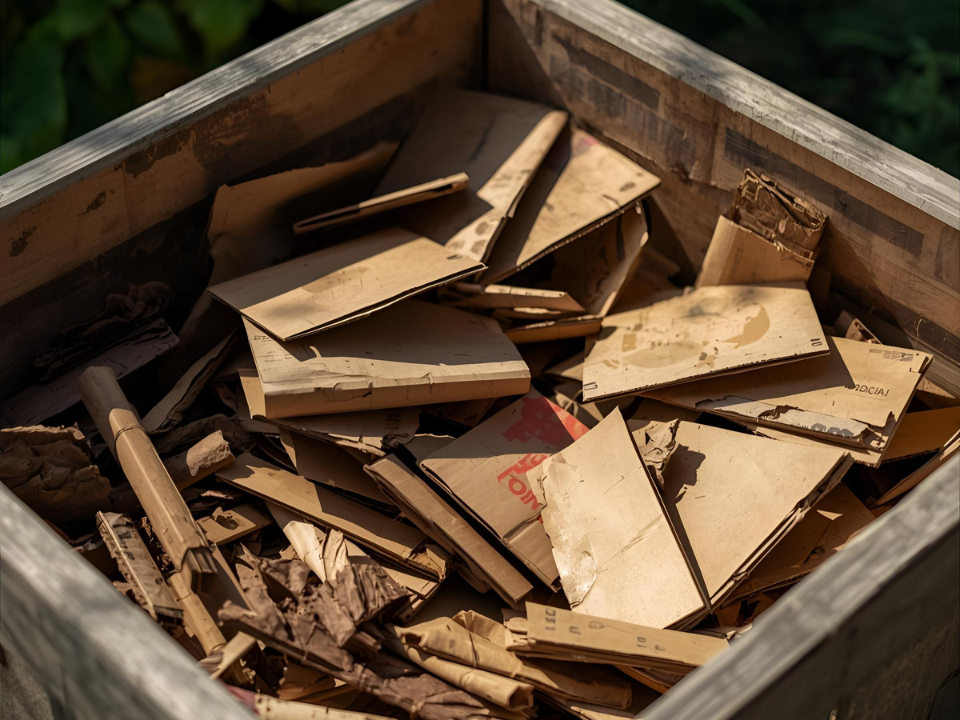
Cardboard adds a valuable carbon source to balance green materials like food scraps. It helps soak up excess moisture and adds texture to prevent compacting. Before adding it to the compost, tear cardboard into small pieces and remove any tape, stickers, or glossy coatings. Corrugated cardboard works best since it allows air circulation within the pile.
Over time, cardboard composts into a nutrient-rich organic matter that supports soil organisms. It helps loosen heavy soils, allowing roots to grow freely. Mixing cardboard with kitchen waste keeps the compost evenly balanced and reduces waste that would otherwise go to the landfill.
Tea Bags
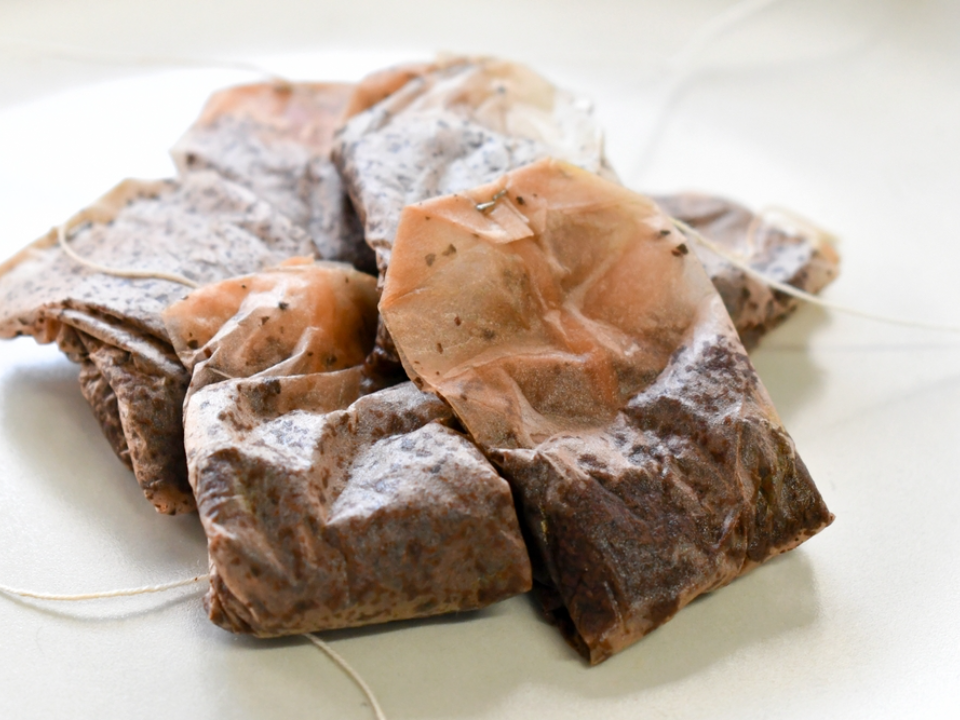
Used tea bags make easy additions to fall compost. They contain nitrogen and beneficial minerals that enrich the pile. Before adding tea bags, check if they are plastic-free and made from natural fibers. Remove any metal staples to prevent contamination in the finished compost.
Tea compost breaks down quickly, helping maintain moisture and microbial activity through the cooler months. Once decomposed, it produces soft, dark compost that enhances soil texture. This addition benefits potted plants, garden beds, and seed-starting soil mixes in spring.
Citrus Peels
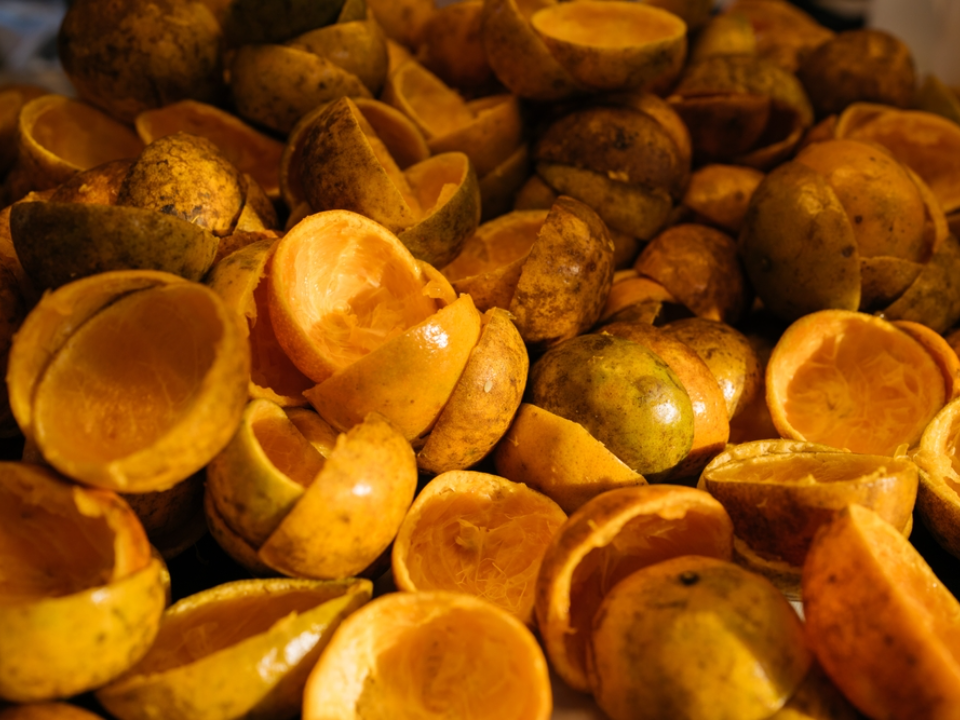
Citrus peels from oranges, lemons, and grapefruits can be composted in moderation. They are rich in nutrients but can take longer to break down due to their tough skin and essential oils. Cutting them into small pieces helps speed up decomposition. Avoid adding too many at once, as the strong scent can slow microbial activity.
Once composted, citrus peels contribute natural acidity that benefits certain plants like tomatoes and roses. They add small amounts of phosphorus and potassium, enriching garden soil. When mixed properly with other materials, citrus peels help produce a balanced compost mix ready for spring planting.
Wood Ash
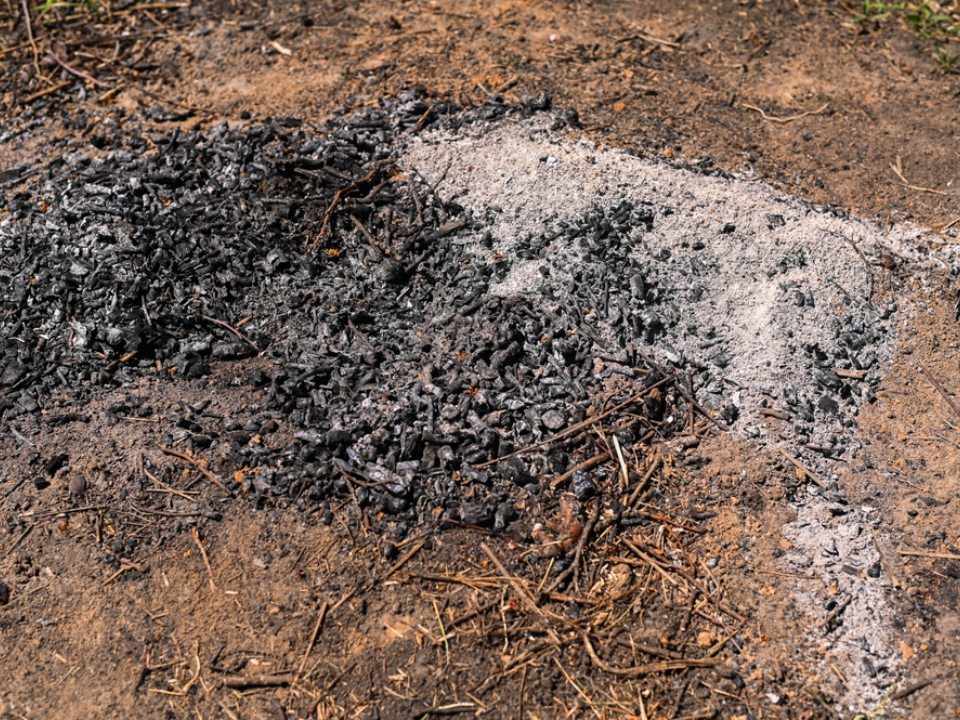
Wood ash from clean, untreated firewood can be added to compost in small quantities. It contains potassium and calcium, both useful for plant growth. Avoid ashes from charcoal or painted wood, as these may contain harmful chemicals. Sprinkle the ash lightly through the pile rather than dumping it in one spot.
Adding wood ash helps neutralize overly acidic compost, balancing the pH level. When used correctly, it improves soil fertility and strengthens root systems. Since ash is alkaline, it should be added sparingly, especially if your compost already includes lime or other base materials.
This article originally appeared on Avocadu.
